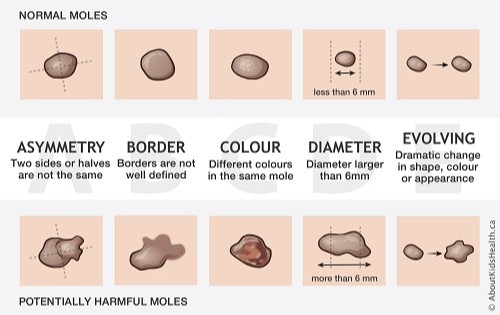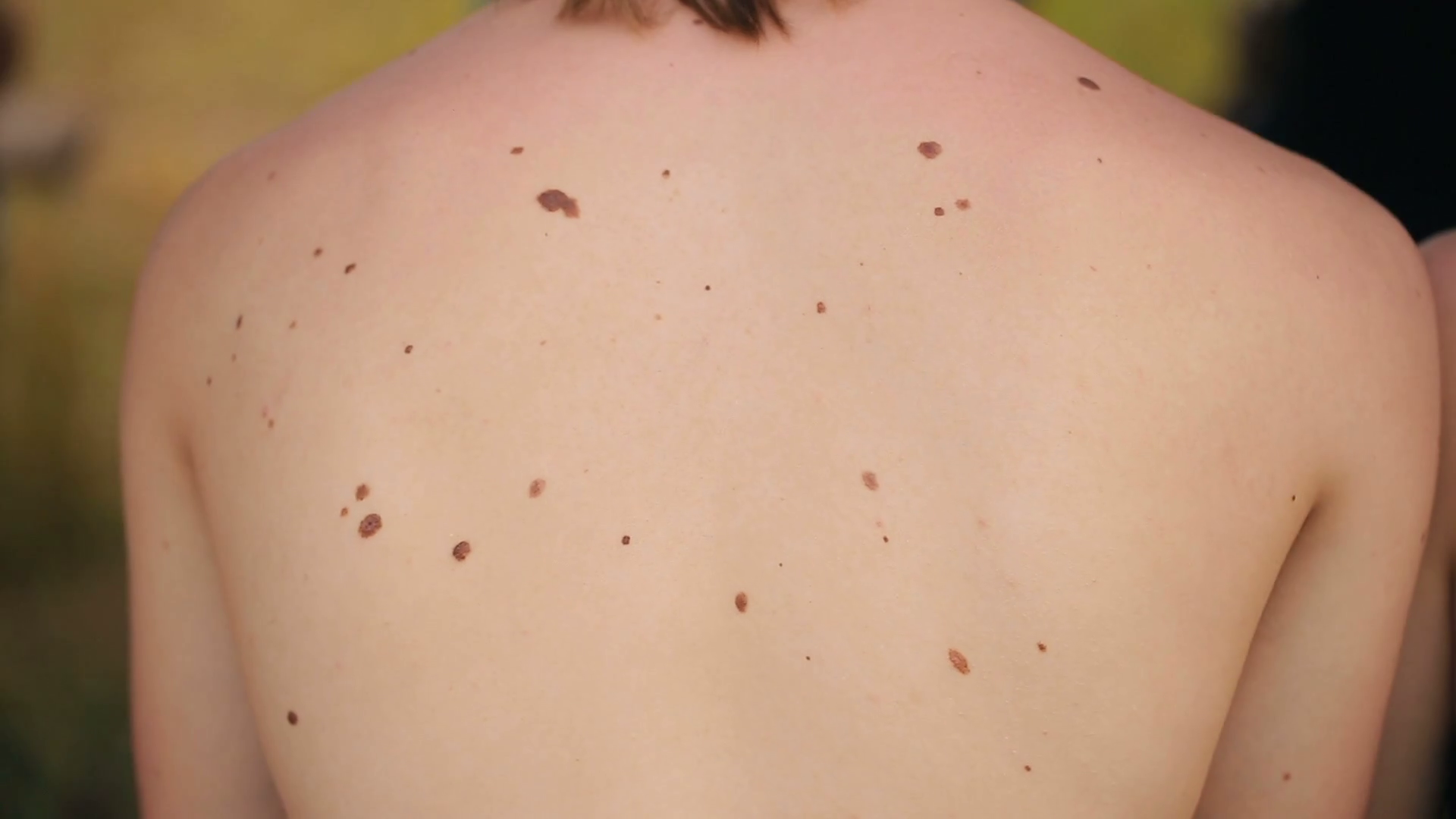Black Spots in Moles: Identifying Warning Signs and When to Seek Medical Attention
What are the different types of skin moles. How can you identify potentially dangerous moles. When should you consult a doctor about a mole. What is the ABCDE method for evaluating moles. How are suspicious moles removed and examined.
Understanding the Nature and Types of Skin Moles
Skin moles are a common occurrence, with most individuals having between 10 and 40 moles on their body. These pigmented growths can appear anywhere on the skin and are usually visible by age 20. While genetics largely determine mole patterns, environmental factors like sun exposure can influence their number and appearance.
Are all moles the same? No, moles can be classified into different types based on their characteristics and time of development:
- Congenital moles: Present at birth, affecting about 1% of the population
- Acquired moles: Develop during childhood or early adulthood, often due to sun exposure
- Atypical moles (dysplastic nevi): Larger, irregularly shaped moles with uneven coloration
The ABCDE Method: A Crucial Tool for Mole Evaluation
How can you determine if a mole requires medical attention? The ABCDE method is a valuable tool for assessing moles:

- A – Asymmetry: One half of the mole differs from the other
- B – Border: Irregular, scalloped, or poorly defined edges
- C – Color: Variation in shades including black, brown, white, red, or blue
- D – Diameter: Larger than 6mm (about the size of a pencil eraser)
- E – Evolving: Changes in size, shape, or color over time
Understanding these criteria can help you identify potentially problematic moles that warrant professional evaluation.
Recognizing Warning Signs: When to Consult a Medical Professional
While most moles are harmless, certain changes or characteristics may indicate a need for medical attention. When should you see a doctor about a mole?
- New moles appearing after age 20
- Moles that bleed, itch, or cause pain
- Any mole exhibiting one or more of the ABCDE characteristics
- Rapid changes in existing moles
If you have a family history of atypical moles or skin cancer, or if you have numerous moles or freckles, regular dermatological check-ups may be advisable.

The Process of Mole Removal and Examination
How are suspicious moles removed and examined? The process typically involves the following steps:
- Numbing the area around the mole
- Shaving or cutting off the mole
- Closing the area with stitches if necessary
- Sending the tissue to a laboratory for analysis
This procedure allows for a thorough examination of the mole’s tissue, helping to detect any signs of skin cancer at its earliest and most treatable stages.
Black Spots in Moles: Potential Indicators of Melanoma
Why are black spots in moles a cause for concern? Black spots or areas within a mole can be an indicator of melanoma, a serious form of skin cancer. These spots may represent areas where melanocytes (pigment-producing cells) are overproducing pigment or where cancerous changes are occurring.
Is every black spot in a mole cancerous? No, not all black spots in moles are cancerous. However, they should always be evaluated by a dermatologist to rule out melanoma. Some benign reasons for black spots in moles include:
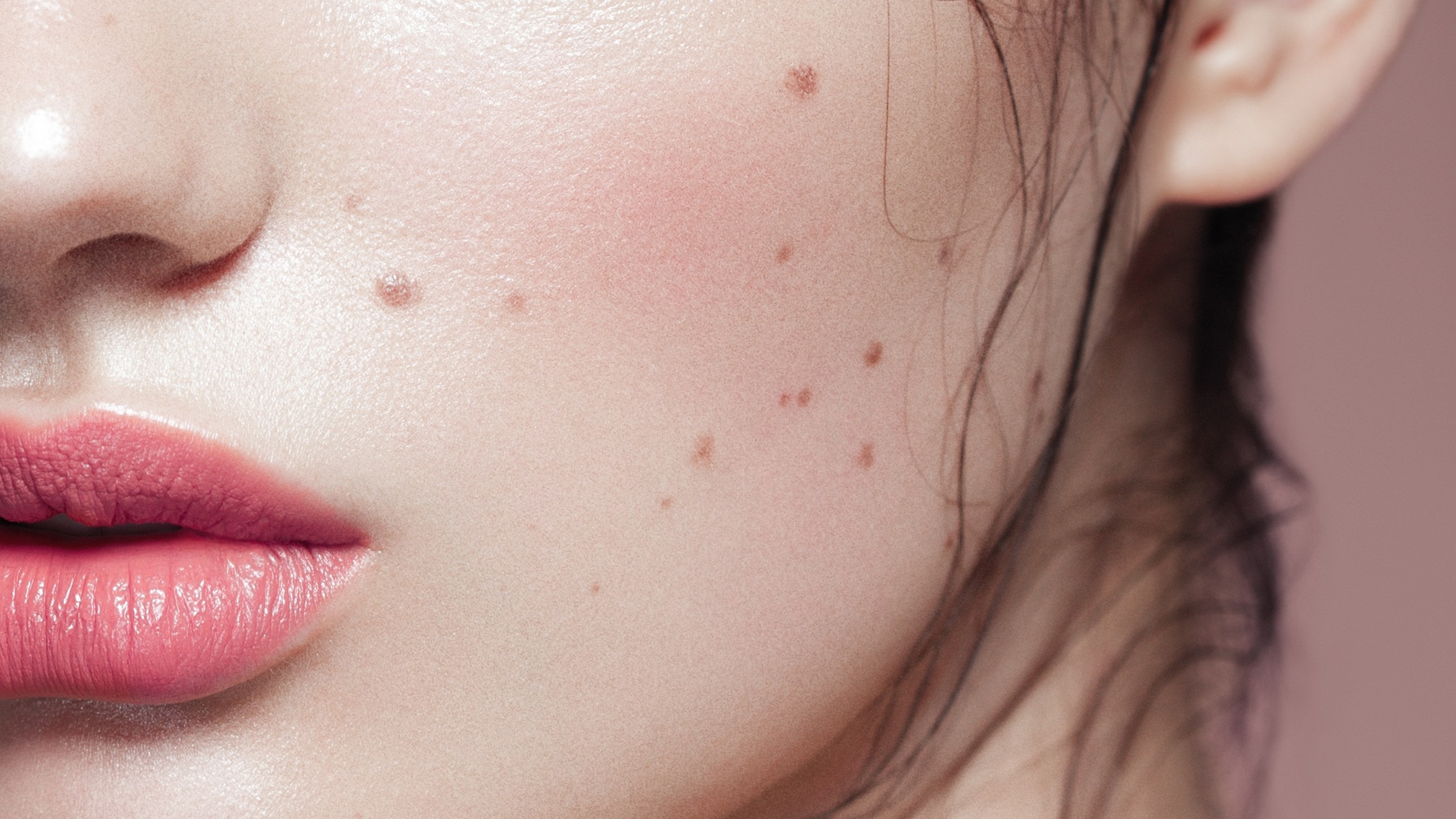
- Recent sun exposure causing increased pigment production
- Hormonal changes during pregnancy
- Normal variations in mole pigmentation
The Impact of Sun Exposure on Mole Development and Changes
How does sun exposure affect moles? Ultraviolet (UV) radiation from the sun can have significant effects on moles:
- Increased mole formation: Sun exposure can stimulate the development of new moles
- Darkening of existing moles: UV rays can cause moles to produce more pigment
- DNA damage: Prolonged sun exposure can damage the DNA in mole cells, potentially leading to cancerous changes
To protect your moles and overall skin health, it’s crucial to practice sun safety measures such as using broad-spectrum sunscreen, wearing protective clothing, and avoiding peak sun hours.
Genetic Factors and Their Influence on Mole Characteristics
How do genetics play a role in mole development? Genetic factors significantly influence various aspects of moles, including:
- Number of moles: Some individuals are genetically predisposed to having more moles
- Mole appearance: Genes can determine the size, shape, and color of moles
- Risk of atypical moles: Certain genetic traits increase the likelihood of developing atypical moles
- Melanoma risk: Family history of melanoma can increase an individual’s risk
Understanding your genetic predisposition can help you and your healthcare provider determine the appropriate level of vigilance in monitoring your moles.

The Role of Hormones in Mole Changes
Do hormonal changes affect moles? Yes, hormonal fluctuations can influence mole appearance and development. This is particularly noticeable during:
- Puberty: New moles may appear, and existing ones may grow or darken
- Pregnancy: Hormonal changes can cause moles to become larger or darker
- Menopause: Some women may notice changes in their moles during this time
While these changes are often benign, it’s important to monitor them and consult a healthcare provider if you notice any concerning alterations.
Advanced Diagnostic Techniques for Mole Evaluation
What advanced methods are used to evaluate suspicious moles? Dermatologists employ several sophisticated techniques to assess moles more accurately:
- Dermoscopy: Uses a special magnifying device to examine mole structures not visible to the naked eye
- Confocal microscopy: Provides detailed images of mole cells without the need for a biopsy
- Digital mole mapping: Creates a photographic record of moles to track changes over time
- Genetic testing: Analyzes mole tissue for specific genetic mutations associated with melanoma
These advanced diagnostic tools help dermatologists make more informed decisions about whether a mole requires further investigation or removal.

The Importance of Regular Self-Examinations
How often should you examine your moles? Experts recommend conducting a thorough self-examination of your skin, including all moles, at least once a month. This practice helps you become familiar with your skin’s normal appearance and makes it easier to detect any changes quickly.
To perform an effective self-examination:
- Use a full-length mirror and a hand mirror to check all areas of your body
- Pay special attention to areas frequently exposed to the sun
- Don’t forget to check less visible areas like your scalp, between toes, and under nails
- Document any changes or new moles for discussion with your healthcare provider
Regular self-examinations, combined with annual skin checks by a dermatologist, form a crucial part of early skin cancer detection and prevention strategies.
Lifestyle Factors That Influence Mole Health and Appearance
Can lifestyle choices affect your moles? Yes, several lifestyle factors can impact the health and appearance of your moles:

- Sun protection: Consistent use of sunscreen and protective clothing can prevent mole changes
- Diet: A balanced diet rich in antioxidants may help protect skin cells from damage
- Hydration: Proper hydration supports overall skin health, including moles
- Avoiding tanning beds: Artificial UV exposure can increase the risk of mole changes and skin cancer
- Stress management: Chronic stress may impact immune function and skin health
By adopting a skin-healthy lifestyle, you can help maintain the stability of your moles and reduce the risk of developing problematic changes.
The Link Between Moles and Skin Cancer Risk
How do moles relate to skin cancer risk? While most moles are benign, their presence and characteristics can provide insights into an individual’s skin cancer risk:
- Number of moles: Having a large number of moles (over 50) may increase melanoma risk
- Atypical moles: The presence of atypical moles is associated with a higher risk of melanoma
- Changing moles: Moles that change rapidly or develop concerning features may indicate skin cancer
- New moles in adulthood: The development of new moles after age 30 warrants careful monitoring
Understanding these associations can help individuals and healthcare providers tailor skin cancer screening and prevention strategies.

Innovations in Mole Monitoring and Skin Cancer Prevention
What new technologies are emerging for mole monitoring? The field of dermatology is witnessing exciting innovations aimed at improving mole monitoring and skin cancer prevention:
- Smartphone apps: AI-powered apps that analyze photos of moles for potential risk factors
- Wearable UV sensors: Devices that track sun exposure and provide real-time protection recommendations
- 3D imaging technology: Advanced systems that create detailed 3D maps of the skin surface
- Molecular diagnostics: Tests that analyze genetic markers in mole tissue for early cancer detection
These technological advancements are enhancing our ability to detect problematic moles early and intervene promptly when necessary.
The Psychological Impact of Atypical Moles
How do atypical moles affect individuals psychologically? The presence of atypical moles can have significant psychological impacts:
- Anxiety: Concerns about the potential for skin cancer development
- Body image issues: Visible atypical moles may affect self-esteem
- Hypervigilance: Excessive worry leading to frequent self-examinations
- Social impacts: Concerns about mole appearance in social situations
Healthcare providers should address these psychological aspects when managing patients with atypical moles, offering support and resources as needed.

Cultural and Ethnic Variations in Mole Characteristics
Do mole characteristics vary across different ethnic groups? Yes, there are notable differences in mole prevalence and appearance among various ethnic populations:
- Caucasians: Tend to have more moles, with a higher risk of developing melanoma
- African Americans: Generally have fewer moles, but a higher risk of acral lentiginous melanoma
- Asians: Often have fewer moles, with a higher prevalence of subungual melanoma
- Hispanics: May have an increased risk of melanoma in less-pigmented areas of the body
Understanding these ethnic variations is crucial for tailoring skin cancer screening and prevention strategies to diverse populations.
The Role of Environmental Pollutants in Mole Development
Can environmental pollutants affect mole formation? Emerging research suggests that certain environmental factors may influence mole development and behavior:
- Air pollution: Exposure to particulate matter may increase oxidative stress in skin cells
- Chemical exposure: Certain industrial chemicals have been linked to increased mole formation
- Endocrine disruptors: Some environmental toxins may affect hormonal balance and mole growth
- Radiation: Non-ionizing radiation from electronic devices may impact skin cell behavior
While more research is needed, these findings highlight the importance of considering environmental factors in comprehensive skin health strategies.
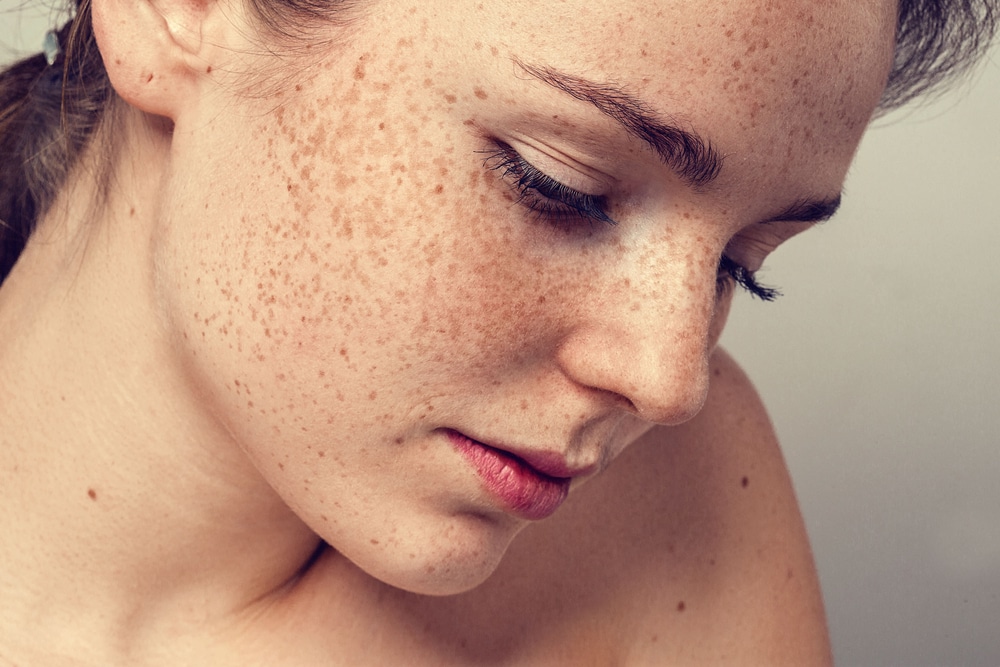
Mole Management in Special Populations
How should mole monitoring be approached in special populations? Certain groups require tailored approaches to mole management:
- Children: Regular monitoring is crucial, as moles can change rapidly during growth
- Pregnant women: Hormonal changes can affect moles, requiring careful observation
- Immunosuppressed individuals: Higher risk of skin cancer necessitates more frequent screenings
- Elderly: May have difficulty self-examining, benefit from assisted skin checks
Healthcare providers should consider these special circumstances when developing mole monitoring plans for their patients.
The Future of Mole Research and Management
What does the future hold for mole research and management? Several exciting areas of investigation are shaping the future of mole care:
- Personalized risk assessment: Developing more accurate models to predict individual melanoma risk
- Non-invasive diagnostics: Advancing technologies for mole evaluation without the need for biopsies
- Targeted therapies: Exploring treatments that specifically address atypical moles
- Preventive strategies: Investigating novel approaches to prevent problematic mole development
These research directions hold promise for improving our ability to manage moles effectively and reduce the burden of skin cancer.
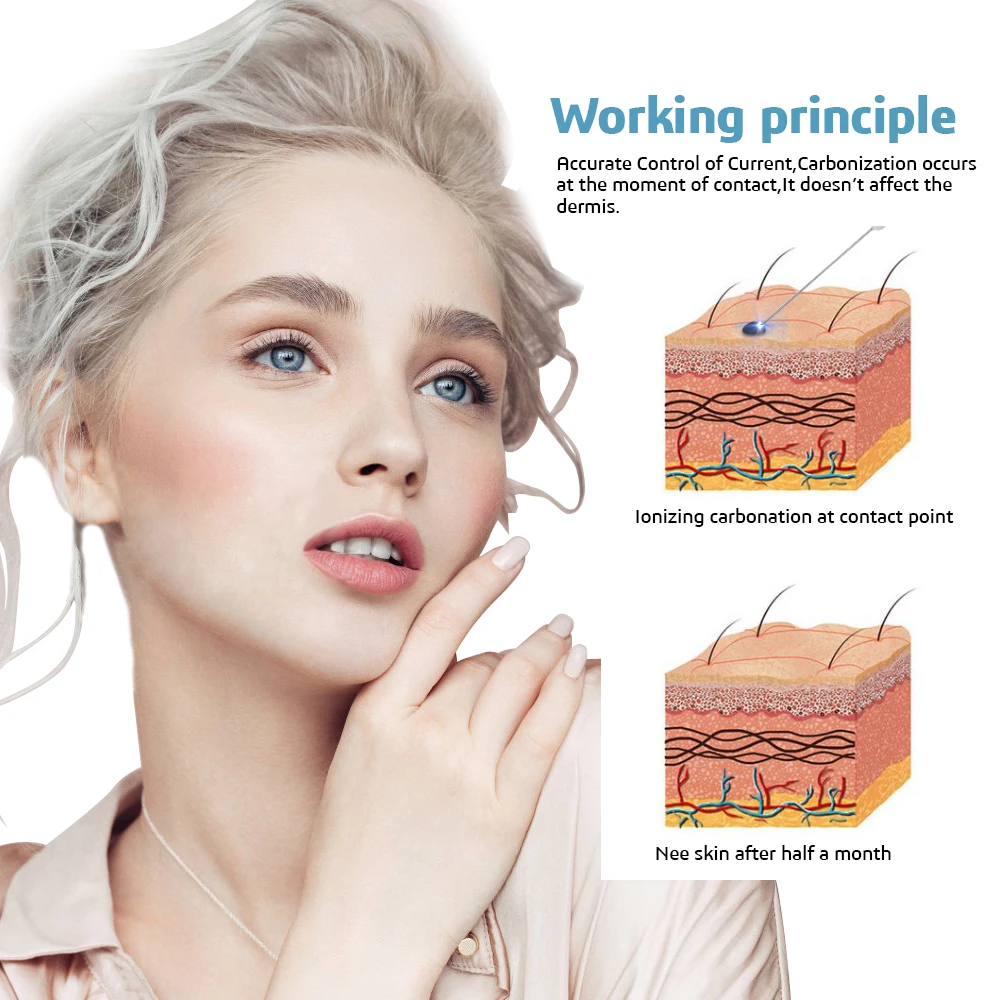
What to Look for, When to Worry
Everyone has moles on their skin. On average, most people have at least 10, but less than 40 moles. A mole can appear anywhere on your body, and most moles appear by age 20.
Although your pattern of moles is most likely determined by your genetics, sun exposure can cause you to have more moles, and can cause the ones you already have to get darker. New moles tend to appear and existing ones tend to get larger and darker during your teen years and if you become pregnant.
Types of Skin Moles
If you have a mole, you may be wondering if it’s harmless or if you should see your doctor about it. A mole usually appears as a small, brownish spot on your skin, but can come in many shapes, sizes, and colors. Depending on its appearance and when it developed, a mole can be classified as one of the following types:
- Congenital moles. When a mole is present at birth, it is called a congenital mole, or congenital nevus.
 About 1 percent of people have congenital moles, and these moles may be at increased risk of turning into skin cancer.
About 1 percent of people have congenital moles, and these moles may be at increased risk of turning into skin cancer. - Acquired moles. Acquired moles account for most moles and usually develop during childhood or early adulthood. These moles are usually smaller than a quarter inch, and are thought to be due to excessive sun exposure. Most acquired moles will not develop into skin cancer.
- Atypical moles. Atypical moles (also known as dysplastic nevi) are larger than a pencil eraser and shaped irregularly. These moles are usually uneven in color, with a dark brown center. The borders of atypical moles may be irregular, with a lighter or reddish color, and unevenness or black dots around the edge. Atypical moles tend to run in families and they may be at increased risk of developing into skin cancer.
When to See Your Doctor About a Mole
It’s important to consult your doctor or a dermatologist about a suspicious skin mole since it may be an early sign of malignant melanoma, which is a life-threatening form of skin cancer.
Examine your skin regularly, looking for any new skin moles as well as changes in the moles you already have. If you have a family history of atypical moles or skin cancer, or a large number of moles or freckles, your primary doctor may suggest that you see a dermatologist for regular skin evaluations.
When you examine your moles, remember the ABCDEs of melanoma. If you notice any of the following, consult your doctor or dermatologist:
- A for asymmetry: A mole in which one half of the mole does not look like the other
- B for irregular border: A mole with a scalloped or poorly defined border
- C for varied color: A mole that consists of multiple shades of black, brown, white, red, and/or blue
- D for large diameter: A mole that has a diameter larger than that of a pencil eraser
- E for evolving: A mole that’s size, shape, or color changes over time
- New moles: A mole that develops, especially if it appears after age 20
- Bothersome moles: A mole that bleeds, itches, or is painful
Removing a Skin Mole
Most moles are harmless and do not need to be removed. But if your dermatologist thinks your mole looks suspicious, or if you would like to have the mole removed for cosmetic reasons, it can usually be done quite easily.
But if your dermatologist thinks your mole looks suspicious, or if you would like to have the mole removed for cosmetic reasons, it can usually be done quite easily.
To remove a mole, your dermatologist will numb the area around your mole, and then shave or cut it off. After removing the mole, your dermatologist may need to close the area with one or a few stitches. The tissue will be sent to a laboratory to confirm that it is not cancerous.
Most moles are harmless, but getting any suspicious ones checked out quickly will enable you to detect skin cancer in its earliest stages, when it’s most treatable.
The Best Skin-Care Ingredients and Products to Shield Against Environmental Damage
UV rays, blue light, and air pollution can cause fine lines and wrinkles, sagging, and dark spots. Fortunately, certain skin-care ingredients can help…
By Jessica Migala
20 Ways to Preserve — and Boost — Collagen in Your Face
Try these skin-care products, procedures, and habits for smoother, plumper, and healthier-looking skin today. Each of these recommendations is supported…
Each of these recommendations is supported…
By Jessica Migala
What Is Face Yoga? Plus, 5 Exercises to Try at Home
Face yoga may help reduce premature signs of skin aging, such as fine lines and wrinkles. Here’s a look at the limited research behind this approach and…
By Moira Lawler
8 Unexpected Causes of Summertime Rashes
Skin rashes are a common problem during the summer months due to some surprising triggers, such as sunlight, contaminated water, and even lime juice. …
By Colleen de Bellefonds
How Do You Treat Prurigo Nodularis?
Medications for prurigo nodularis, combined with the right cleansing and moisturizing habits, can reduce the intense itchiness that goes with this rare…
By Becky Upham
Does Homemade Rosemary Water Really Make Your Hair Shinier, Healthier, and Grow Faster?
The TikTok trend of using homemade rosemary water for hair care to promote growth, hydrate locks, and increase shine comes with a caveat: there’s no scientific. ..
..
By Leah Groth
7 Plant-Based Oils That May Give You Healthier Hair
Can pumpkin seed oil help with hair growth? What about rosemary oil, coconut oil, and avocado oil? We consulted dermatologists and unpacked the research…
By Leah Groth
What Is Prurigo Nodularis? Symptoms, Causes, Diagnosis, Treatment, and Prevention
Prurigo nodularis (PN) is an inflammatory skin condition marked by firm, itchy, often painful bumps (nodules) on the skin. Read on for more on causes …
By Becky Upham
Skin Tags: Symptoms, Causes, and Treatment Options
Skin tags, extra pieces of skin that stick out beyond the surface of the body, are very common. Learn what may cause them and your options for treatment…
By Julie Davis Canter
Signs of Melanoma Skin Cancer | Symptoms of Melanoma
- Normal moles
- Possible signs and symptoms of melanoma
Unusual moles, sores, lumps, blemishes, markings, or changes in the way an area of the skin looks or feels may be a sign of melanoma or another type of skin cancer, or a warning that it might occur.
Normal moles
A normal mole is usually an evenly colored brown, tan, or black spot on the skin. It can be either flat or raised. It can be round or oval. Moles are generally less than 6 millimeters (about ¼ inch) across (about the width of a pencil eraser). Some moles can be present at birth, but most appear during childhood or young adulthood. New moles that appear later in life should be checked by a doctor.
Once a mole has developed, it will usually stay the same size, shape, and color for many years. Some moles may eventually fade away.
Most people have moles, and almost all moles are harmless. But it’s important to recognize changes in a mole – such as in its size, shape, color, or texture – that can suggest a melanoma may be developing.
The most important warning sign of melanoma is a new spot on the skin or a spot that is changing in size, shape, or color.
Another important sign is a spot that looks different from all of the other spots on your skin (known as the ugly duckling sign).
If you have one of these warning signs, have your skin checked by a doctor.
The ABCDE rule is another guide to the usual signs of melanoma. Be on the lookout and tell your doctor about spots that have any of the following features:
- A is for Asymmetry: One half of a mole or birthmark does not match the other.
- B is for Border: The edges are irregular, ragged, notched, or blurred.
- C is for Color: The color is not the same all over and may include different shades of brown or black, or sometimes with patches of pink, red, white, or blue.
- D is for Diameter: The spot is larger than 6 millimeters across (about ¼ inch – the size of a pencil eraser), although melanomas can sometimes be smaller than this.
- E is for Evolving: The mole is changing in size, shape, or color.

Some melanomas don’t fit these rules. It’s important to tell your doctor about any changes or new spots on the skin, or growths that look different from the rest of your moles.
Other warning signs are:
- A sore that doesn’t heal
- Spread of pigment from the border of a spot into surrounding skin
- Redness or a new swelling beyond the border of the mole
- Change in sensation, such as itchiness, tenderness, or pain
- Change in the surface of a mole – scaliness, oozing, bleeding, or the appearance of a lump or bump
Be sure to show your doctor any areas that concern you and ask your doctor to look at areas that may be hard for you to see. It’s sometimes hard to tell the difference between melanoma and an ordinary mole, even for doctors, so it’s important to show your doctor any mole that you are unsure of.
To see examples of normal moles and melanomas, visit the Skin Cancer Image Gallery on our website.
Remember, too, that a small portion of melanomas start in places other than the skin, such as under a fingernail or toenail, inside the mouth, or even in the colored part of the eye (iris), so it’s important to show a doctor any new or changing spots in these areas as well.
The American Cancer Society medical and editorial content team
Our team is made up of doctors and oncology certified nurses with deep knowledge of cancer care as well as journalists, editors, and translators with extensive experience in medical writing.
Last Revised: August 14, 2019
American Cancer Society medical information is copyrighted material. For reprint requests, please see our Content Usage Policy.
Is it dangerous to have small black dots on a mole: causes, symptoms and treatment.
An article about the causes of the appearance of small black dots on a mole, possible methods of treatment and tips for preventing this phenomenon. A detailed overview of the problem and recommendations from experts.
A detailed overview of the problem and recommendations from experts.
Moles are a natural part of our skin and may be present on the body from birth or appear throughout life. Small black dots on moles can be a cause for concern, as they can be indicative of various skin conditions. Some of them can be especially dangerous.
If you notice small black dots on your mole that were not there before, it is necessary to have an examination by a dermatologist. These dots may indicate skin health issues such as melanoma. Melanoma is a type of cancer that can develop on the skin and moles.
However, not all small black dots on moles indicate the development of skin cancer. Sometimes they can occur due to changes in diet, age, lifestyle, and other factors. In any case, if you find black dots on your mole, the best solution is to consult a doctor for professional advice.
Small black dots on a mole: causes, symptoms and treatment
What are these dots?
Small black dots on a mole can be a sign of melanoma or skin cancer. They can be introductory if, for example, they are part of a mole, or have the character of much more critical changes.
They can be introductory if, for example, they are part of a mole, or have the character of much more critical changes.
What are the symptoms?
The presence of small black dots on the mole can be observed in places where the mole thickens or its color becomes more pronounced. Sometimes on very small moles, almost invisible to the eye, dots may appear on the central part of the mole, visible when magnified through a magnifying glass.
Other symptoms of these changes may include: change in the size of the mole, possibly a bleeding surface, the appearance of new chains of stained cells around the mole, various ulcerations, or other changes in skin color or texture.
How to treat?
Melanoma and skin cancer treatment begins with a visit to a skin doctor and oncologist. They will carry out all the necessary examinations to detect the presence of tumors and strongly recommend that any suspicious moles be removed.
Worth noting:
It is better to consult a doctor in advance to exclude the possibility of malignant development of an additional “armed” point on a mole than to detect a problem already in advanced form.
Causes of small black dots on a mole
Small black dots or pinpoint hemorrhages on a mole can be signs of various changes occurring in the tissues and cells of the mole. They may indicate certain diseases or conditions. Consider the most common causes of small black dots on a mole.
- Damage to the mole: mechanical damage occurs due to excessive friction and impact. This can lead to tiny capillaries breaking and bleeding inside the mole.
- Hormonal changes: changing hormonal levels in the body can affect moles, which can lead to the formation of small black dots on their surface;
- Age-related changes: skin aging can cause various changes in moles, including the formation of blackheads;
- Genetic factor: certainly, the presence of black spots on moles can be inherited from parents;
- Use of poor-quality cosmetics: Some cosmetics may contain harsh chemicals that can damage skin moles and cause discoloration, including blackheads.

It should be noted that some types of moles, such as band moles and star moles, may have black dots and this is normal in their particular case. However, you should always see a doctor if you notice any unusual changes in the mole, such as an increase in size, extra dots, or odd shapes, to rule out a possible risk of developing melanoma, an aggressive type of skin cancer.
Sedentary (less than 5000 steps)
0%
Sedentary (5000 to 10000 steps)
0%
Active (more than 10000 steps)
9000 2 0%
Symptoms indicating danger of a mole
Rapid growth: If the mole begins to grow rapidly or change shape, you should consult a doctor. There is a possibility that it could be a malignant tumor.
Color: Another symptom that indicates the danger of a mole is a change in color. If the mole has become darker or multi-colored areas have appeared, this may indicate a possible skin cancer.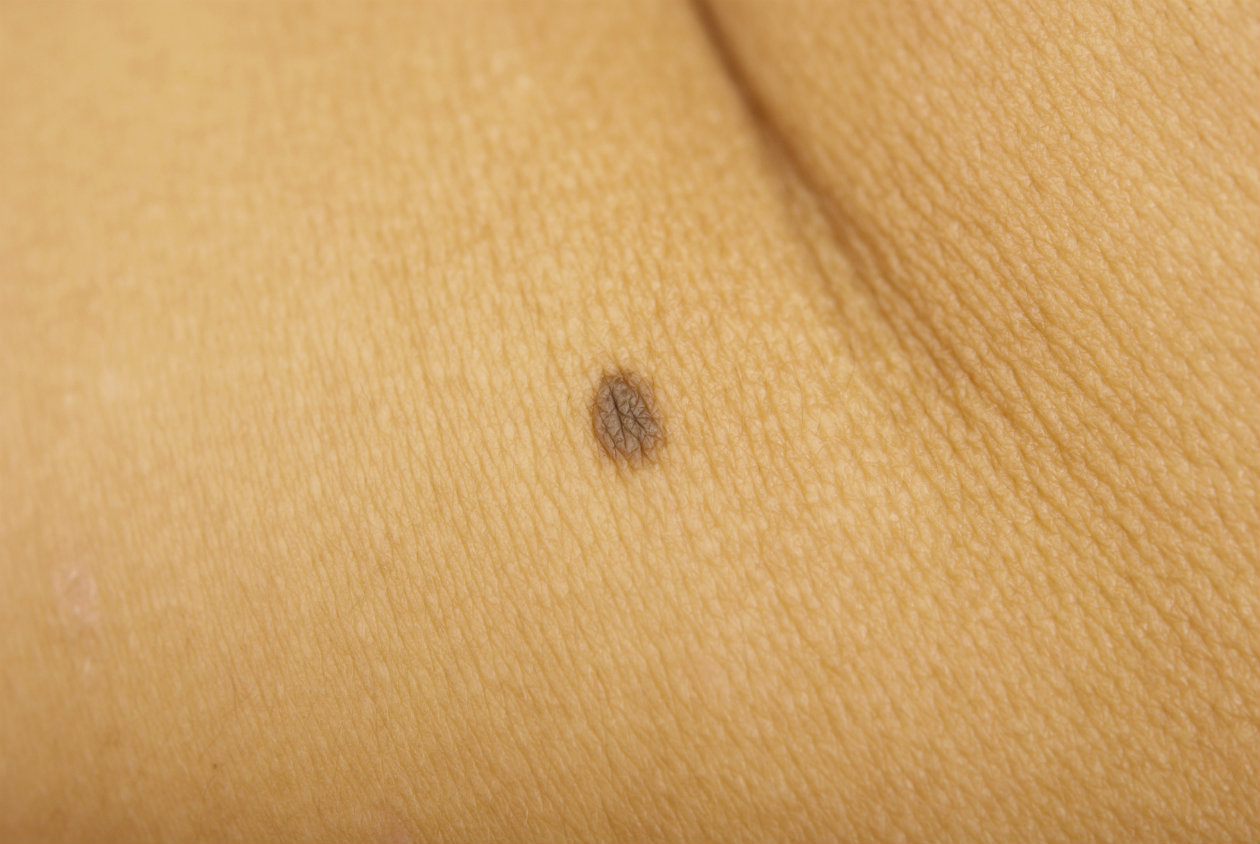
Bleeding: If a mole begins to bleed, it may be a sign of a malignant tumor or other serious skin disease.
Pain or itching: The appearance of pain or itching may indicate that the mole is not harmless. This may be a sign of nodular or superficial skin cancer.
Circumference: A mole that is irregular in shape or protruding around the edge may be malignant. If a mole is significantly different from other moles, you should consult a doctor.
When to see a dermatologist
Small black dots on moles can be a sign of the development of malignancies such as melanoma. If you notice that new dots have appeared on your mole or it begins to change its color or shape, you should immediately contact a dermatologist.
Also pay attention to other risk signs for melanoma development, such as: presence of multiple moles, reddish hue, size larger than 6 mm, non-uniform color, etc. If you have these signs, be sure to consult a dermatologist.
If you are not sure that you have signs of the development of the disease, but notice new points on the moles, it is better to contact a dermatologist for a preventive examination. Early detection of the problem increases the chances of a full recovery.
Diagnosis of small black dots on a mole
Small black dots on a mole may be a sign of a change in the structure of the mole, which should be examined by a dermatologist or oncologist.
Various methods are used for diagnosis, including visual examination, dermatoscopy, biopsy, and skin cancer tests. Using a dermatoscope can help you see the fine details and structure of the mole, allowing your doctor to make a more accurate diagnosis.
In a biopsy, a small area of the mole is removed and sent for analysis to establish the cellular composition and determine if the change is malignant.
Skin cancer tests include methods such as computed tomography and magnetic resonance imaging, which can detect cancer and determine its stage.
If you have small black dots on your mole, see a dermatologist or oncologist for a diagnosis. Early detection of problems can help in early treatment and prevention of further health problems.
What small black dots on a mole mean
Small black dots on a mole can mean blood vessels inside the mole or changes in the melanin cells that color the skin.
If new melanin cells appear on the mole, it may enlarge or change color. This may be a sign of developing skin cancer, so it is recommended to visit a dermatologist for an examination.
The blood vessels inside the mole can also produce blackheads due to the blood flow starting to surface. But this symptom is usually not a dangerous running case.
When moles begin to change their properties, this may be a sign of changes taking place in the body. Monitor the appearance of your moles and if you find any changes, tell your doctor. Regular checking can help diagnose possible problems in time and prevent their development.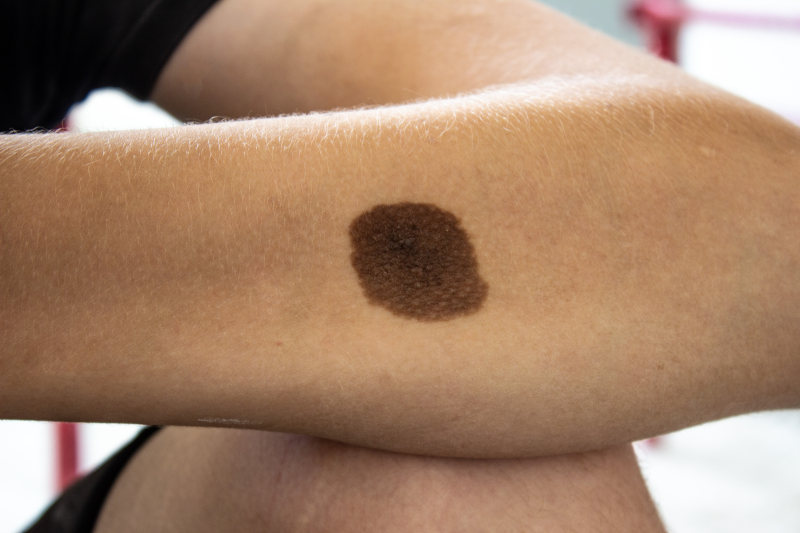
Treatment of small black dots on a mole: only by a dermatologist
Small black dots on a mole can be a sign of the onset of malignancy. Therefore, the treatment of this problem is extremely important and should only be carried out under the supervision of a dermatologist.
At the first stage, the specialist diagnoses and identifies the main reason that could lead to the formation of a black dot on the mole. After that, an individual approach to treatment is chosen, which may include surgical removal, cryotherapy, radiofrequency removal or laser removal.
When a mole is surgically removed, a dermatologist removes the area around the blackhead and additional tissue to ensure that all of the tumor has been removed. Cryotherapy is used in the treatment of multiple moles when high-frequency cold is applied to the tumor.
Radiofrequency removal is used for deeper moles and allows you to cut out the tumor without damaging healthy tissue. Laser removal is also used to remove moles, especially if they are in the acne area.
- Remember that self-treatment of black spots on a mole can lead to complications and negative health consequences.
- See a dermatologist if you find small black dots on your moles.
What treatments are used for small black dots on a mole
If a small black dot on a mole causes concern, it is best to consult a dermatologist. In some cases, a doctor may recommend surgery to remove a mole.
Another method of treatment is laser removal of moles. In this case, the specialist uses laser equipment to remove the mole. This method is more precise than conventional surgery and may give better cosmetic results.
If the black dot on the mole is small, the doctor can simply remove it by circumcision. In such a case, a small cut is made around the mole and it is removed. The procedure does not take much time and does not require general anesthesia.
It should be noted that not all moles need to be removed. Some moles are benign and not critical to human health. If the doctor has determined that the mole is safe, then there is no need to remove it.
Some moles are benign and not critical to human health. If the doctor has determined that the mole is safe, then there is no need to remove it.
Essential for effective treatment of small black spots on a mole
The first and most important thing to get effective treatment for small black spots on a mole is to correctly identify their cause. Dots can appear due to various factors, including skin damage from external influences, heredity, and other medical reasons. Therefore, in order to receive the correct treatment, it is imperative to consult a dermatologist.
The second no less important condition is timely and correct skin care in the mole area. The dots can increase in size and number if they are subjected to mechanical action. Therefore, it is worth avoiding rubbing and rubbing the area of the mole, and also provide it with gentle care throughout the treatment.
The third important point is strict adherence to the treatment recommendations given by the dermatologist. They may be prescribed the use of local medicines or resort to surgical methods that contribute to the complete elimination of points.
They may be prescribed the use of local medicines or resort to surgical methods that contribute to the complete elimination of points.
- Never use hair dye or tattoo ink on moles without proper precautions and without consulting your doctor.
- Do not use traditional medicine methods and other recommendations that have not been consulted by a doctor.
If you follow all the recommendations and contact a dermatologist in time, you can get rid of small black spots on a mole and restore skin health.
What complications can arise from improper treatment of small black dots on a mole
Infection
Improper treatment of small black dots on a mole can lead to infection if you try to remove the point yourself without sterile instruments. Having received a complication in the form of an infection, a mole can become a dangerous source of infection, in rare cases, such infections can lead to septicemia.
Destruction of a mole
Trying to remove small black dots on a mole yourself can damage not only the mole, but also the damaged skin around it.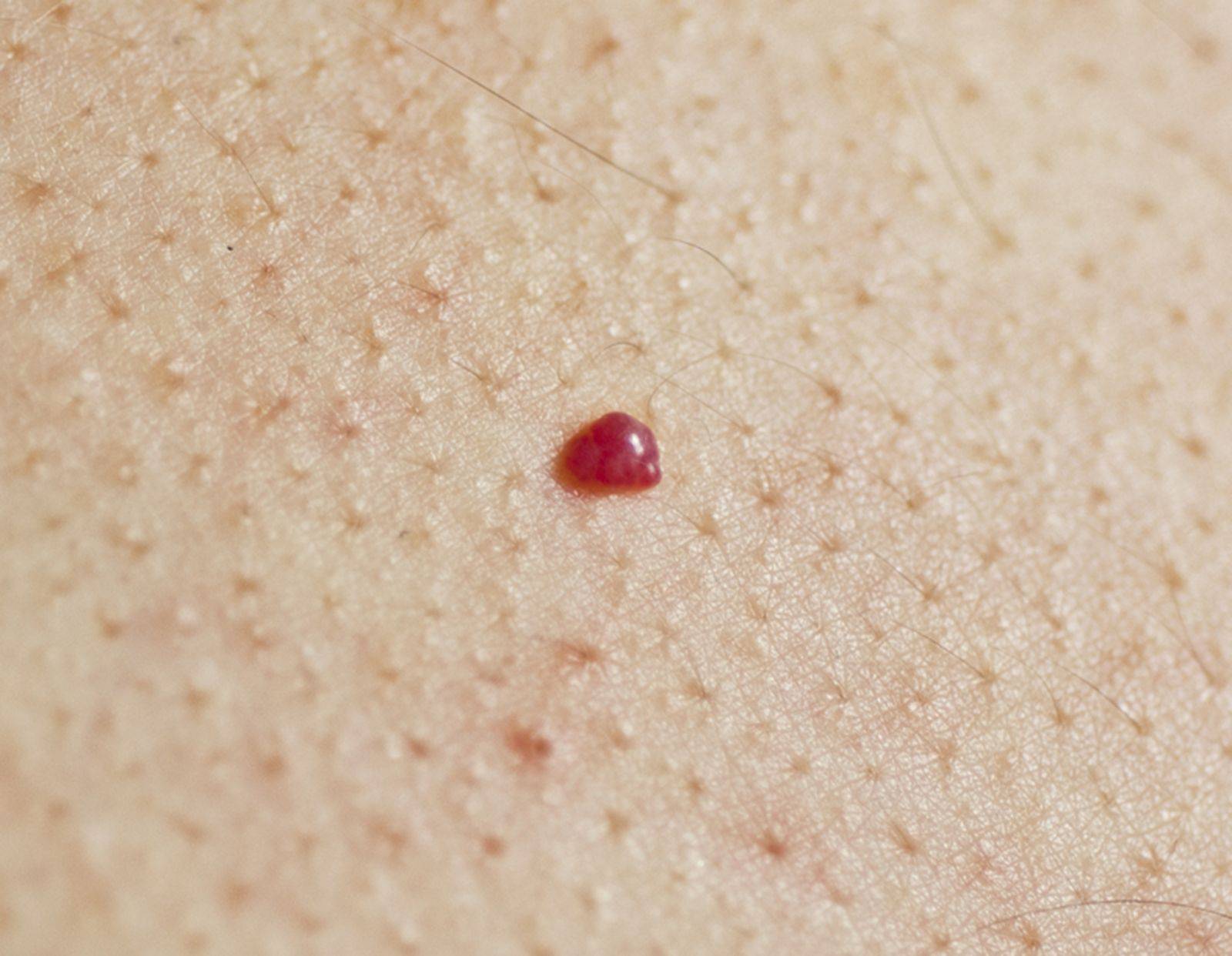 In rare cases, such actions can destroy the mole completely and cause burns from cryonas.
In rare cases, such actions can destroy the mole completely and cause burns from cryonas.
Mole growth
Small black dots on a mole usually do not pose any danger. However, with the wrong treatment, these moles can start to grow. The growth of a mole can be a sign of skin cancer, then immediate medical attention is needed.
Scars
Improper treatment of small black dots on a mole may cause scarring and discoloration of the skin around the mole. This can lead to loss of skin elasticity, age spots and other cosmetic problems. Therefore, it is necessary to contact a qualified specialist to remove small black dots on the mole.
Precautions for the treatment of small black dots on a mole
Self-diagnosis : If you notice small black dots or other abnormalities on your mole, be sure to take a self-diagnosis on special sites or consult a dermatologist. Do not try to diagnose a mole yourself, as it can be dangerous to your health.
Avoid cuts and injuries : Small black dots on a mole can become a source of infection if not properly treated. Avoid cuts or injury to the mole. Do not try to cut out a mole yourself at home, as this can cause serious damage.
Indications for surgery : If you find small black spots on a mole, consult a dermatologist who will determine the need for surgical treatment. A doctor can remove a mole with a laser or surgically, especially when the formation is harmful to health.
Regular check-ups : Check moles regularly, especially those that are checked after removal. Notice changes in their color, size, or texture. If you notice any changes, contact your dermatologist.
Sun protection : Avoid walking in the sun without sun protection. If you find small black dots on the mole, monitor their condition when exposed to sunlight. Moles that are exposed to strong sunlight can change color, which can be hazardous to health.
Prevention of small black dots on the mole
To prevent the appearance of small black dots on the mole, you need to take care of your skin:
- Avoid prolonged exposure to the sun . Under the influence of ultraviolet rays of the sun, moles can change color and structure, as well as new ones appear.
- Wear sun protection . Apply sunscreen with a sun protection factor of at least 30-40.
- Do not touch moles . Sharp injury to moles can lead to damage and change in shape and color.
- Skin care . Examine existing moles regularly and keep track of new ones.
- Consult a dermatologist . If there are suspicious changes on the moles, you should contact a dermatologist and undergo a routine examination.
Following these recommendations will help to avoid the appearance of small black spots on the mole and maintain healthy skin.
What foods are essential for healthy skin
Nutrition plays a very important role in the health of our skin. There are certain foods that are essential for maintaining healthy skin. Let’s look at some of them:
- Omega-3 fatty acids: Found in salmon, tuna, mackerel, nuts, chia seeds and flax, they help slow down the skin aging process and reduce inflammation.
- Vitamin C: It boosts collagen in the skin and may help prevent UV damage. Vitamin C can be obtained from fruits such as oranges, lemons, kiwis and strawberries; and from vegetables such as red peppers, broccoli and cabbage.
- Vitamin E: Helps protect the skin from free radical damage caused by UV radiation. Vitamin E is found in fish oils, asparagus, nuts, seeds and green vegetables.
- Beta-carotene: It can improve skin color and protect skin from UV damage. Beta-carotene is found in carrots, sweet potatoes, pumpkins, and red peppers.

In addition, sufficient water and an overall healthy diet rich in vitamins and minerals also play an important role in skin health. Remember that a healthy diet is not only good for your skin, but for your overall health.
Factors that contribute to the appearance of small black dots on a mole
Moles can appear in people as young as three years old. Depending on genetics, they can be small or large, round or oval, flat or convex. As a rule, moles are not a cause for concern, as long as they do not change their shape, color, or size.
However, small black dots on a mole can be a symptom of early melanoma. Melanoma is a malignant tumor of the skin. That is why it is important to know what factors contribute to the appearance of these points on moles in order to detect them in a timely manner and begin treatment. The most common factors are listed below:
- Excessive exposure to ultraviolet rays. Dry skin and prolonged exposure to ultraviolet rays can cause the appearance of small black dots on the mole, which may indicate the onset of skin cancer.
 Therefore, avoid exposure to direct sunlight, use sunscreen with an SPF of at least 30, and wear special protective clothing when outdoors.
Therefore, avoid exposure to direct sunlight, use sunscreen with an SPF of at least 30, and wear special protective clothing when outdoors. - Hormonal changes. As a rule, small black dots on moles appear in women during pregnancy or while taking hormonal drugs. This is due to changes in estrogen levels in the body. Women suffering from hormonal diseases such as PKO or endometriosis also need to monitor the condition of their moles.
- Heredity. A significant role in the appearance of small black dots on moles is played by heredity. Also, if parents had melanomas, then the likelihood of developing this disease in their children increases several times.
How to avoid small black dots on a mole
1. Protect your skin from the sun. Exposure to ultraviolet rays is one of the main causes of moles on the skin. Therefore, using a sunscreen with a high SPF level and avoiding sun exposure during times of peak UV exposure can reduce the risk of new moles and small blackheads appearing on existing ones.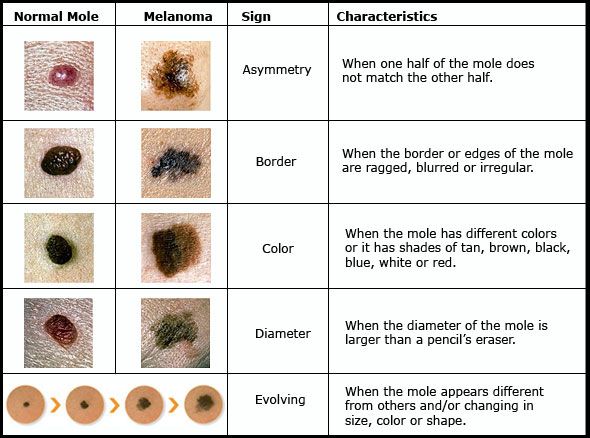
2. Avoid injury to moles. Perhaps the most common reason for the appearance of small black dots on moles is an injury that can be caused by mechanical stress. Try not to touch the mole, do not slap it, do not scrape or scratch the skin around it, because. this can cause blackheads to appear and have more serious consequences.
3. Check all new moles regularly. Experts recommend checking new moles for changes and noticing how they change over time. Any changes such as an increase in size, change in shape, color, thickness, surface, flowing, sagging, itching, etc. may indicate a potential hazard. Therefore, if you notice any changes in the mole, consult a dermatologist for advice.
4. If necessary, remove moles. If the mole is in a zone of friction or constant tension, this can contribute to its traumatization and the appearance of black spots. In such cases, it may be necessary to remove the mole with a laser or other methods. However, do not try to remove the mole yourself, as this can damage it and leave a scar.
However, do not try to remove the mole yourself, as this can damage it and leave a scar.
By following these basic guidelines, you can avoid small black dots on your moles and protect yourself from the potential dangers associated with melanoma. Do not forget to regularly conduct self-monitoring and, if necessary, contact a dermatologist.
Related videos:
Q&A:
How do you know if a small black dot on a mole is dangerous?
If the black dot on the mole has grown in size, bleeds, itches or causes pain, then you should immediately contact an oncologist for a diagnosis.
What factors can influence the appearance of a black spot on a mole?
One of the most likely factors is damage to the mole, such as from trauma or exposure to cold. Exposure to ultraviolet rays, heredity, hormonal changes in the body can also affect.
Exposure to ultraviolet rays, heredity, hormonal changes in the body can also affect.
Are there certain groups of people who are more likely to develop blackheads on their moles than others?
Yes, there are such groups. These include people with blue or green eyes, blond hair and skin, and people with multiple moles on their bodies.
What are the methods of treating a black spot on a mole?
Treatment varies depending on whether the black spot on the mole is dangerous. If it does not pose a threat to health, then the doctor may recommend that the mole be removed surgically or with laser therapy procedures. If, however, skin cancer is diagnosed, the patient requires a large amount of treatment, including surgery, chemotherapy, and radiation therapy.
What should be done to prevent the appearance of black spots on moles?
The main measure for the prevention of skin tumors is the use of anti-inflammatory creams and a doctor’s consultation when new moles are found on the body.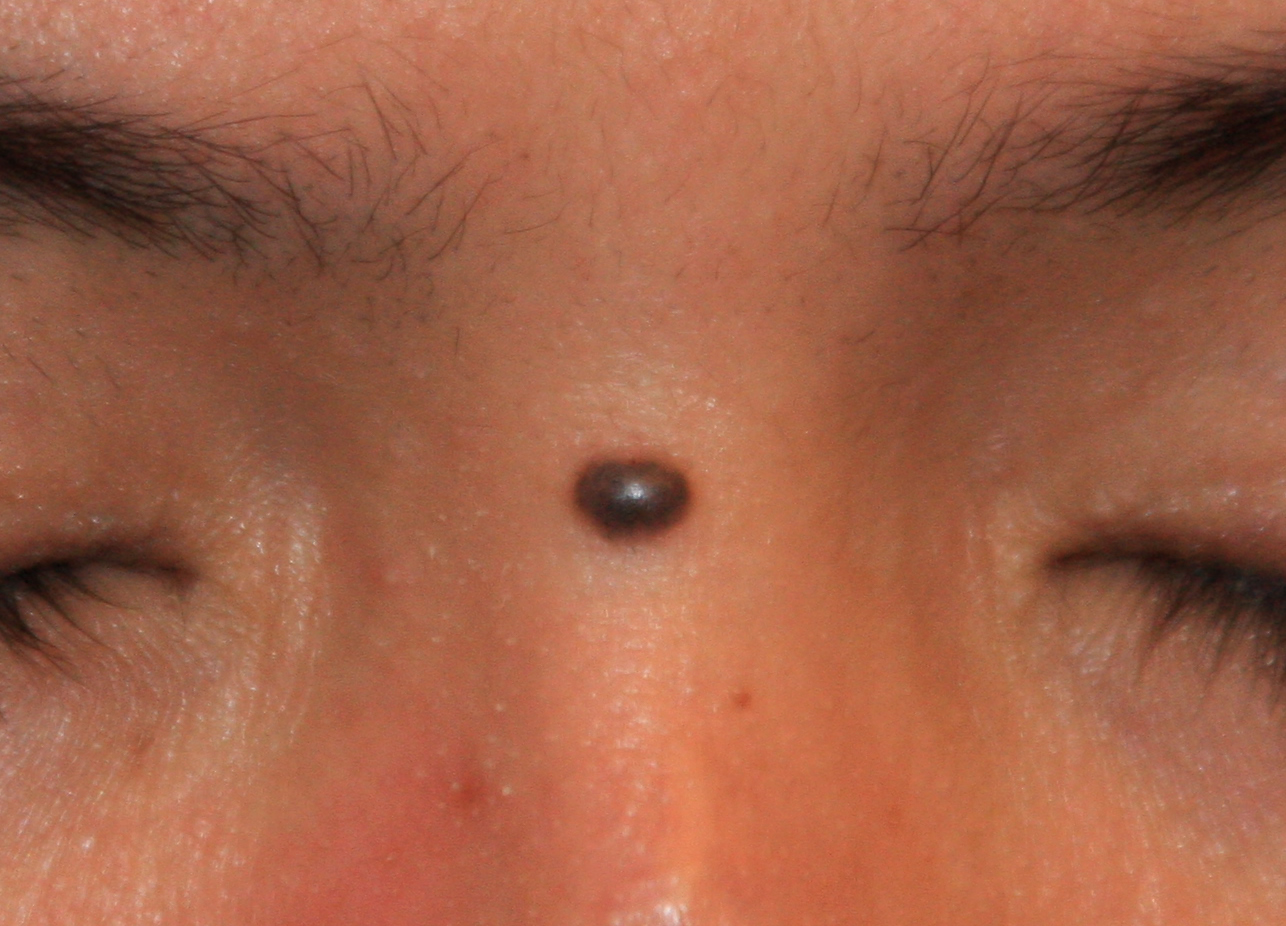 You should also pay attention to moisturizing the skin and use protection against ultraviolet rays.
You should also pay attention to moisturizing the skin and use protection against ultraviolet rays.
Is it dangerous to leave a black spot on a mole without treatment if it does not cause discomfort?
Even if a black dot on a mole does not bleed and does not give off any symptoms, this does not mean that it is not dangerous. The reason for this may be the slow, painless growth of a malignant skin tumor.
Is the presence of a small black dot on a mole a sign of melanoma?
Yes, this is one of the main signs of melanoma, skin cancer. Therefore, it is worthwhile to carefully monitor any changes in moles and consult a doctor if they are detected.
What to do after removing small black dots on a mole
After removing small black dots on a mole, special attention should be paid to wound care. It is important not to infect it and prevent the re-formation of points.
The first two days after the removal of points on the mole, do not wet the wound. It is recommended to treat it with an antiseptic solution, and then cover it with a sterile bandage.
It is recommended to treat it with an antiseptic solution, and then cover it with a sterile bandage.
A few days after the dots have been removed, the mole can be treated. To do this, you need to use products that promote skin regeneration and scar reduction. For example, you can apply special creams containing panthenol, aloe vera or colloidal silver.
It is also recommended to temporarily stop using cosmetics at the site of removal of points. This will reduce the risk of wound infection and help the skin heal faster.
If signs of inflammation, such as redness, swelling, pain or pus appear after removal of the dots on the mole, you should immediately consult a doctor. You may need to be treated with antibiotics or incise the wound to remove the purulent contents.
Moles and their importance in human life
Moles are a natural element on the human skin and can be of different sizes, shapes and colors. Some moles are already from birth, while others may appear over time.
Moles can have both aesthetic and medical significance. Many people consider moles to be their identity and even an addition to their appearance. However, it is important to know that moles can also be a sign of certain skin conditions.
Moles can be vascular, pigmented and mixed. Vascular are formed from cells of the vascular wall, and pigmented ones are formed from cells that contain melanin. Mixed moles contain both vascular and pigmented cells.
Depending on the shape, color and growth of moles, doctors can determine their nature, which helps in the diagnosis of skin diseases. Moles can also be a sign of benign or malignant neoplasms and require monitoring and supervision by a doctor.
If moles are located on open areas of the body, especially when exposed to strong ultraviolet rays, this can lead to the development of malignant tumors and requires systematic monitoring by specialists.
- As a result, moles can not only create a feature of a person’s appearance, but also have medical significance in the diagnosis of skin diseases.

- Control and monitoring of moles is recommended to be carried out systematically, especially if they are on open skin areas.
Where do blackheads, pimples, moles, freckles come from? And is it necessary to worry about this? Most of these elements are harmless, but people want to eliminate them due to aesthetic discomfort.
March 13, 2023
- Source:
- iStockphoto
Some skin problems may indicate certain conditions, including skin cancer, which require immediate medical attention. “Doctor Peter” spoke with cosmetologist Tatyana Krygina about the different types of defects that can appear, about the causes and treatment options.
Large pores, blackheads and whiteheads
Pimples or blackheads is a skin condition that occurs when the glands of the epidermis produce too much sebum. Excess fat production is triggered by many factors, including:
hyperactive sebaceous glands;
hormonal changes during puberty, menstruation or menopause;
stress, anxiety or depression that can affect hormone synthesis.

There are several different types of pimples that vary in appearance. Here are some examples.
Black dots are small, dark spots on the surface of the skin. They look like clumps of dirt, but are actually made up of oil that has become trapped inside a pore. When this oil reacts with air, it turns black.
Whiteheads are small round patches of white or skin color. They develop as a result of sebum and dead skin cells blocking pores.
Papules are small, hard, red bumps on the skin. They develop when excess oil, bacteria, and dead skin cells penetrate deeper into the epidermis, causing inflammation. When many papules develop at once, this can give the skin a rough, sandpaper-like texture.
Pustules are raised, red bumps that contain yellow or white pus. Pustules form when sebum, bacteria, and dead skin cells gather at the mouth of the pore, and pathogenic microbes are activated there.

See also
Nodules and cysts
Sometimes acne can be complicated by various additional problems. For example, nodules can form, which are large skin imperfections that develop when pores become clogged. The sebum mixes with dead skin cells and bacteria, which then go deep into the skin.
Excess fatty substances and bacteria cause infections and inflammation within the skin. This type of defect can lead to scars if a person presses on the pimples.
Rupture in the mucosal pores may result in the spread of infected contents to the surrounding surface. An acne cyst is a membrane that has formed around an infected area. Cysts look like large, swollen, red spots. They can be very painful to the touch. Like nodules, cysts can leave visible scars.
Hyperpigmentation
Hyperpigmentation is a discoloration of the skin, pigmented areas appear darker than others. This is a common and usually harmless occurrence. Hyperpigmentation can result from genetic factors, damage from prolonged sun exposure, or acne scarring.
Freckles is a type of hyperpigmentation that a person can inherit from their parents. Small flat patches of red, brown, coffee, or black. They can appear anywhere on the body.
Sun spots or “spots” is another type of hyperpigmentation. These small spots may appear on areas of the skin that are exposed to the sun. Acne scars can also cause dark patches to appear on the skin after they are removed.
Melasma is a type of hyperpigmentation that can develop during pregnancy or when taking birth control pills. Occurring hormonal changes lead to an increase in the level of melanin. Melanin is the pigment that gives skin its color. Overproduction of melanin can make the skin darker.
See also
Ingrown hairs as a result of epilation
Sometimes the hairs can curl around or grow into the skin, which can lead to red, itchy bumps. Doctors call these skin defects ingrown hairs. Various hair removal methods such as waxing, shaving or plucking can cause ingrown hairs.
Various hair removal methods such as waxing, shaving or plucking can cause ingrown hairs.
The causes of moles are not fully understood
Birthmarks are defects that appear on the skin of a newborn baby. They may appear either at birth or shortly thereafter. Some birthmarks disappear with time, while others may be permanent . Experts are still not sure what causes birthmarks. However, these skin defects can sometimes develop as a result of:
processes where skin pigment cells coalesce to create moles or areas of darker skin;
tissue growth that creates raised areas of thickened skin.
The mole will look different from the surrounding skin. These types of defects can be of any size and vary greatly in appearance:
flat or raised;
like a bruise or spot;
any color including pink, red, brown or tan.
Moles are usually harmless, but some of the lesions that appear on a child’s skin may signal the presence of an underlying disorder.





 Therefore, avoid exposure to direct sunlight, use sunscreen with an SPF of at least 30, and wear special protective clothing when outdoors.
Therefore, avoid exposure to direct sunlight, use sunscreen with an SPF of at least 30, and wear special protective clothing when outdoors.
